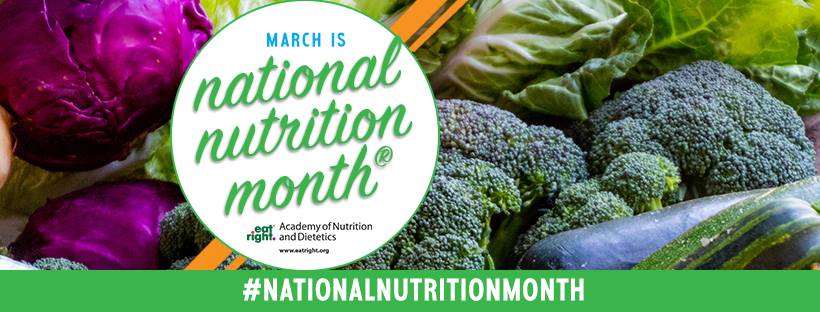Nutrition. We talk about it often. But – what is it really? Defined by Merriam-Webster, nutrition is “the act or process of nourishing or being nourished; specifically: the sum of the processes by which an animal or plant takes in and utilizes food substances.” According to the U.S. Library of Medicine, nutrition is about eating and drinking a healthy and balanced diet.
Why should you have a healthy diet? As a Body Firm client, we hope that we have given you enough information to know that that eating a healthy, balanced diet plays an essential role in maintaining a healthy weight, which is an important part of overall good health. Being overweight or obese can lead to health conditions such as type 2 diabetes, certain cancers, heart disease, and stroke. Conversely, being underweight could also affect your health.
Two big culprits in our diets that are easily reduced are sugar and salt. In a nod to National Nutrition Month, let’s take a quick look at how to easily make better food choices so you can be “nourished” with less sugar and salt.
Eating Right with Less Added Sugars.
Most Americans get too many calories from added sugars which could affect their weight and health over time. “Added sugars” are the sugars and syrups added to foods during processing. Desserts, sodas, and energy and sports drinks are the top sources of added sugars for most Americans, but many other foods contain added sugars. Sugar makes an appearance in places you might not suspect such as yogurts, sauces, catsup, smoothies, cereals and ready-to-eat foods just to name a few.
Examples of added sugars include brown sugar, corn syrup, dextrose, fructose, high-fructose corn syrup, maple syrup, sucrose and white granulated sugar. Sources of added sugars often lack nutrients needed for good health while food and drinks that contain natural sources of sugar provide nutrients like vitamins and minerals.
It’s not necessary to avoid all sources of added sugars but it is important to not include too many sources of added sugars or eat and drink larger amounts than what it is recommended. According to the American Heart Association, the maximum amount of added sugars you should eat in a day are Men: 150 calories per day (37.5 grams or 9 teaspoons); Women: 100 calories per day (25 grams or 6 teaspoons).
How can you reduce sources of added sugars? Firstly, READ THE LABELS! The ingredients that appear first in the ingredients list are in the largest amount. Other actions to take: Add cinnamon or fresh fruits such as blueberries to plain cooked oats instead of using instant flavored oatmeal; switch from sweetened to unsweetened applesauce; quench your thirst with water or flavored waters instead of sweetened beverages such as energy, soft and sports drinks; use jams and jellies with no sugar added; use spices in place of sugar-heavy sauces and make your own salsa and sauces.
Eating Right with Less Added Salt
Just like sugar, most Americans are getting too much sodium from the foods they eat. Excessive salt plays a role in high blood pressure which is also known as hypertension. If your physician has advised you to reduce the amount of sodium in your diet, take heed – excessive salt plays a role in high blood pressure which is also known as hypertension.
Highly processed and prepared foods tend to be high in sodium. Cured meats such as bacon, sausage, deli/luncheon meats, hot dogs and ready-to-eat meals like canned soups and chili, and “instant” flavored noodles and rice have more than an adequate amount of sodium included. Soy sauce, salad dressings, and seasoning packets are also high in sodium.
Sooooo…how much sodium is enough? The American Heart Association recommends no more than 2,300 milligrams (mg) (that’s roughly one teaspoon) a day with an ideal limit of no more than 1,500 mg per day for most adults. On average, Americans eat more than 3,400 milligrams of sodium each day. YIKES! Because the average American eats so much excess sodium, even cutting back by 1,000 milligrams a day can significantly improve blood pressure and heart health
And…just like sugar, you CAN easily reduce the amount of sodium in your diet. How? Focus on fresh foods such as fruits, vegetables, eggs, fish, poultry and grains. Cook more often at home and when you do, skip or lighten up on the salt and try salt-free seasonings such as herbs, spices, garlic, vinegar, lemon juice, and black pepper. Taste your food BEFORE you add salt. When using canned vegetables with salt added, drain and rinse the vegetables to reduce the amount of salt. Don’t add salt to the boiling water contradictory to the cooking instructions.
Oh – and READ THE LABELS!
Happy eating right…..

